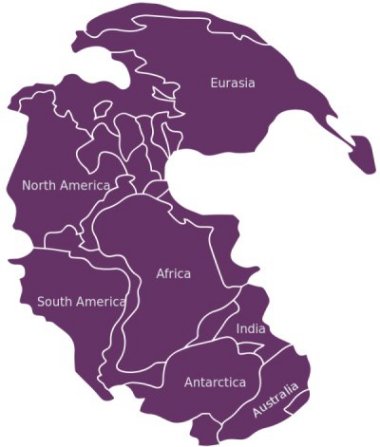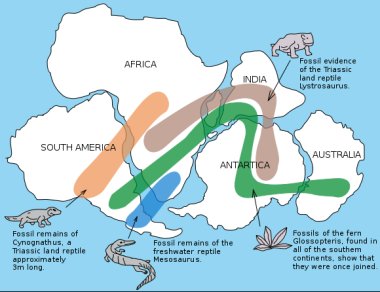The
supercontinent Pangaea existed from the late Paleozoic and into
the early Mesozoic eras of geologic time. |
||
| |
||
Pangaea (also spelled Pangea) was one of Earth's imporatant supercontinents that formed about 300 million years ago during Paleozoic time, and lasted until it broke apart early in Mesozoic time. A supercontinent is an assemblage of nearly all or all of the Earth's continental blocks or cratons, in essense forming huge and composite mass of land.
Depiction of Pangaea with today's continents denoted. |
|
|
|
||
|
|
||
|
Site
Navigation: |

 Pangaea
during Triassic time prior to breakup in early Mesozoic time.
Pangaea
during Triassic time prior to breakup in early Mesozoic time.